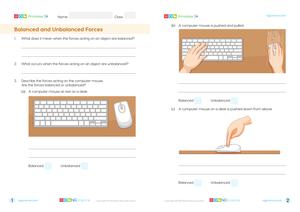Begin the lesson by introducing Newton's First Law of Motion. Use relatable examples such as sitting in a car at a red light and the effects of inertia when the car starts moving.
Go to the LessonLearning Objectives
- Understand and explain Newton's first law of motion and the concept of inertia.
- Describe how an object's mass affects its inertia and resistance to changes in motion.
- Identify examples of inertia in everyday situations, such as riding in a car or pushing a shopping trolley.
- Explore the motion of objects in space and how they demonstrate Newton's first law of motion.
Introduction and Hook
Engage students with a discussion on everyday examples of inertia, such as riding in a car or pushing a shopping trolley.
Direct Instruction
Explain Newton's First Law of Motion and the concept of inertia using detailed examples. Discuss how an object's mass affects its inertia and resistance to changes in motion.
Guided Exploration
Explore the motion of objects in space and how they demonstrate Newton's First Law of Motion. Discuss the example of the NASA space probe Voyager 1.
Hands-On Activity
Conduct a hands-on activity where students use a crash test dummy model to observe the effects of inertia and motion.
Independent Practice
Have students identify examples of inertia in their daily lives and document them in a journal.
Check for Understanding
Conduct a class discussion to check for understanding of Newton's First Law of Motion and the concept of inertia.
Review and Reflection
Review key concepts of Newton's First Law of Motion and inertia with the class.
Encourage students to reflect on how their understanding of motion and forces has changed through a reflective journal entry.
Assessment and Extension
Administer the 'Forces and Motion' assessment to evaluate students' understanding of the lesson's key concepts.
Try the QuizFor extension, have students explore the concept of inertia in space by researching the Voyager 1 mission and presenting their findings.






